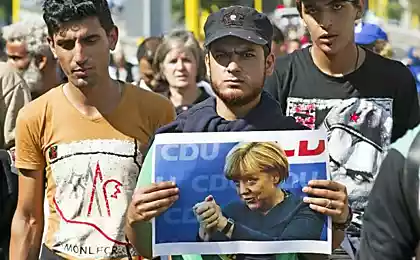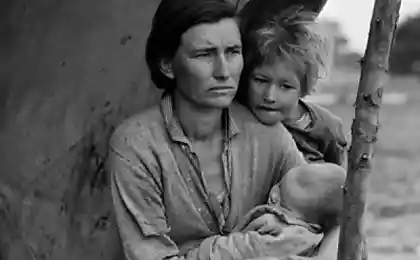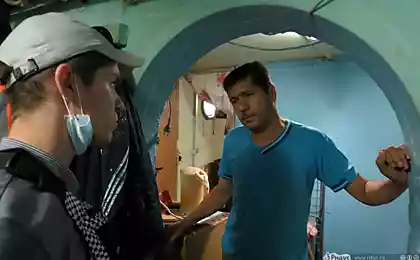896
Migrants: a bloody path in the US
Every year tens of thousands of people, 90% of whom come from Central America, Mexico, the whole cross from south to north, hoping to get into the United States. They go on foot, traveling on trains, cars, buses, in trucks. These people are often subjected to violence, including sexual abuse, robbery, kidnapping, suffering from disease and hunger. Not everyone is able to survive in their journey to the border States. Photographer from Ecuador, Felipe Jacome Marchan was held together with migrants in their difficult path, and documented the hardships and dangers faced by these people. When Mexico declared war on drugs, the situation has only worsened: the drug cartels in search of easy prey began to kidnap migrants to demand ransom from their relatives. Because of all these factors, the international organization Amnesty International in April named path of migrants through Mexico one of the most dangerous routes in the world.
16 ph via live_report
1. Photographer Felipe Jacome Marchan spent 5 months, living in various shelters along the way, and the captured persons of Central American migrants wandering the dangerous path to a better life.

2. Most of the migrants on the way - young men. But there are also women and children, such as those crossing the river Suchiate River on the border of Guatemala with Mexico. According Mexican Service for Migration, about 8% of migrants have not reached the age of 18. Some groups make their way, some are alone.
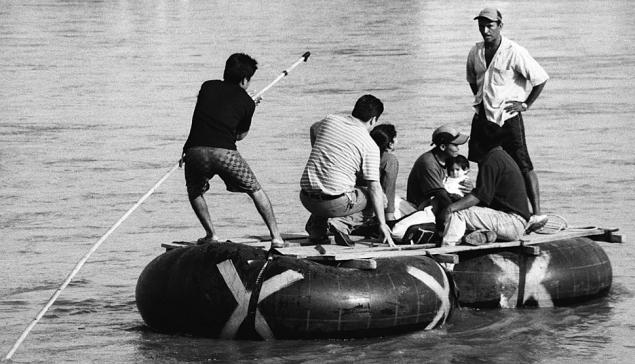
3. On the Guatemalan side of the river, in the town of Ayutla, San Marcos, migrants can rent Kamara - a homemade raft of planks and old car cameras, it is enough to cross a narrow river.
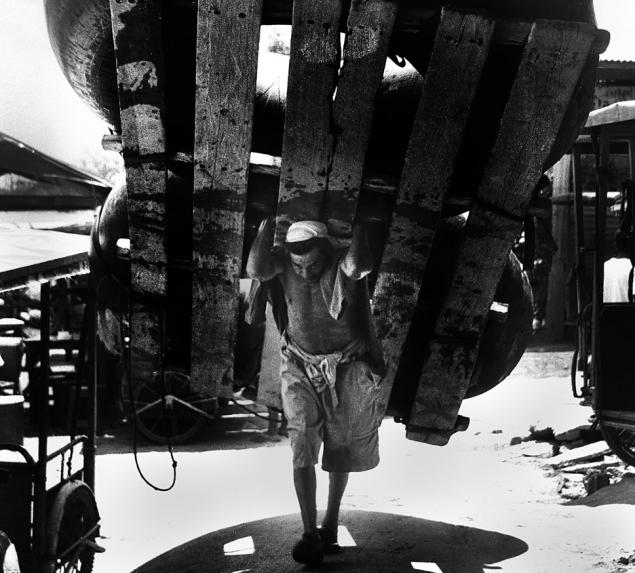
4. On the Guatemalan side of the border - no police or border guards. Mexican Beach Mexican army guards, but for the price of a few pesos they usually agree to ignore the "guests". "Everyone turns as you can" - says Jacome, - rafts to transport not only people, but also weapons, drugs, contraband - anything. "
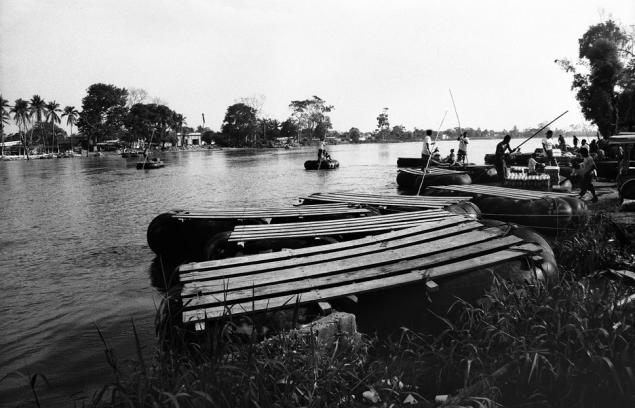
5. Once in Mexico, people go on foot. Previously, from the border to the nearest Mexican town went the train approached and migrants on the roofs of cars. But in 2005, the Mexican authorities have canceled the train and pulled down the path, so now strangers are forced to wade through the dead of woodland teeming with thieves and other dangerous rabble. The man in the picture more than a week made his way through the thicket to the nearest town with a / railway links. He ate unripe fruit, and earned food poisoning.

6. Along the route of mass repetition of migrants Catholic priests have organized several charity shelters, such as a shelter in the town of Tapachula. Where you can eat and spend a few nights until you arrive and do not take the place of the new wanderers. The map on the wall shows clearly a long way yet to. It will take him a few.
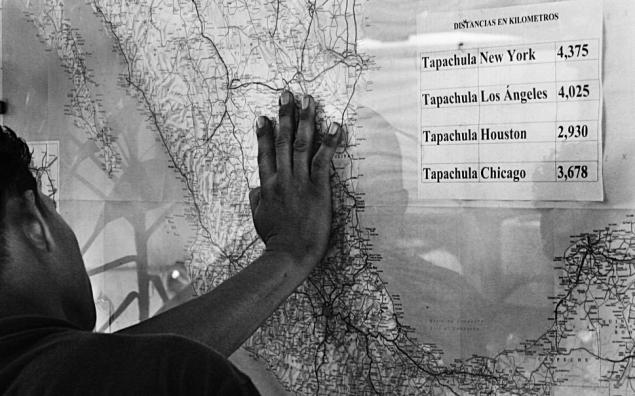
7. To travel needs money, and most of the migrants detained in the towns along the way to earn extra money. These people work in the photo on the packaging at the factory for the processing of papaya, collecting money for the next breakthrough. Some even manage to visit budget English language courses.
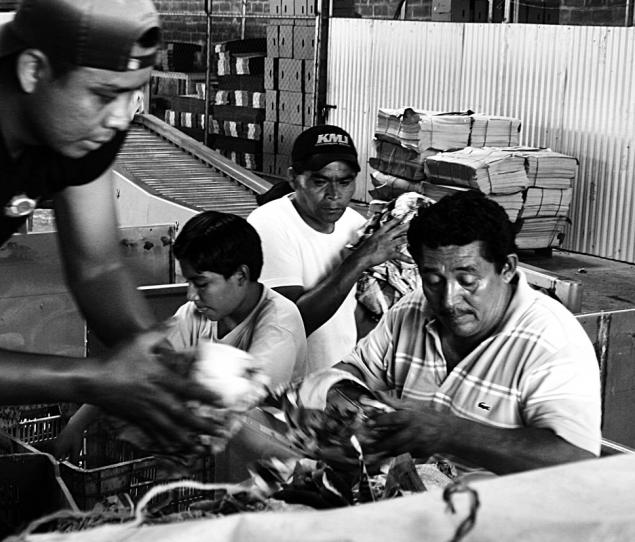
8. The majority of migrants Tapachula jump on a freight train, traveling through Arriaga in Ciudad Ixtepec. Sometimes, trains depart every couple of days, sometimes have to wait a week. The man in the picture is waiting. "It was terribly hot," - says Jacome.
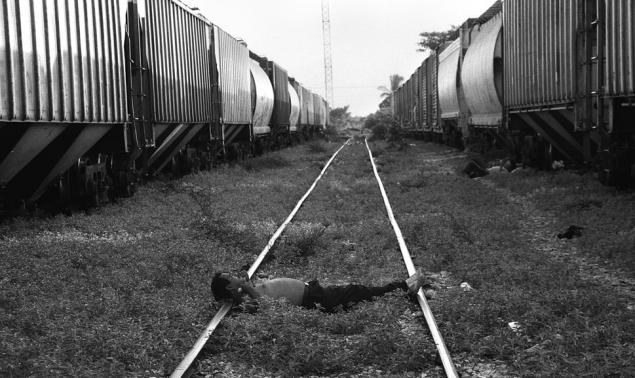
9. None of the tramps knows when will be the right freight train at the station, so they are a handful of ways around waiting. When the freight train finally arrives, it begins doomsday. People crowded precipitated effluent composition. When the train picks up speed, some "hare" not withstand the pressure of air, and can tighten the wheels. Thus deprived of the limbs so many people that for them there is even a special shelter in Ixtepec.
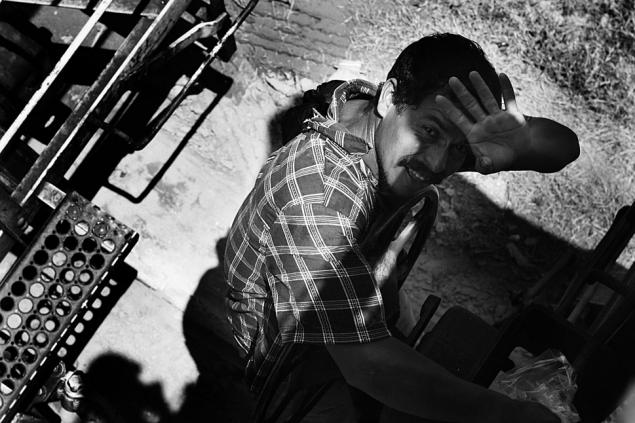
10. For the opportunity to travel as machinists require a migrant charge.
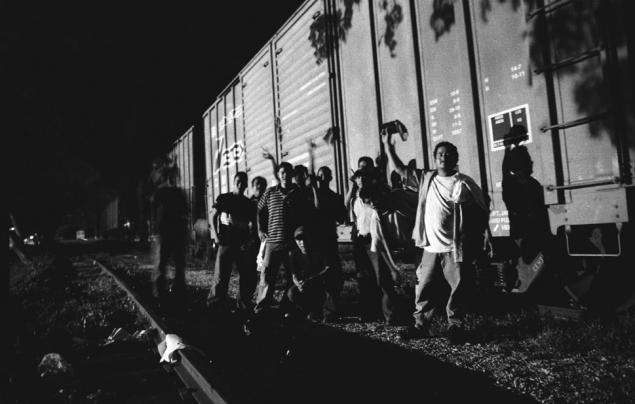
11. Left: This son of illegal immigrants in Los Angeles was in the famous street gang Barrio 18. He was deported to Honduras for a crime and violating immigration laws, but it is already on the way back to the States. The fact that migrants are many bandits posing in an even more precarious position other "peaceful" migrants. They are often subjected to looting and violence on the part of not only the local villains, but these "fellow travelers." Often, peace workers, seeing that the train sits a group of thugs, get off the train and wait for a few days following composition and safer travel. Right: This 13-year-old girl wades through Mexico without their parents and relatives. Her mother, now living in California, threw it, but she still hopes to find her. For the safety of the girl joined the group of male migrants, and for that she does not pay protection money. According to estimates Amnesty International, 60% of women in this way are subjected to sexual exploitation.
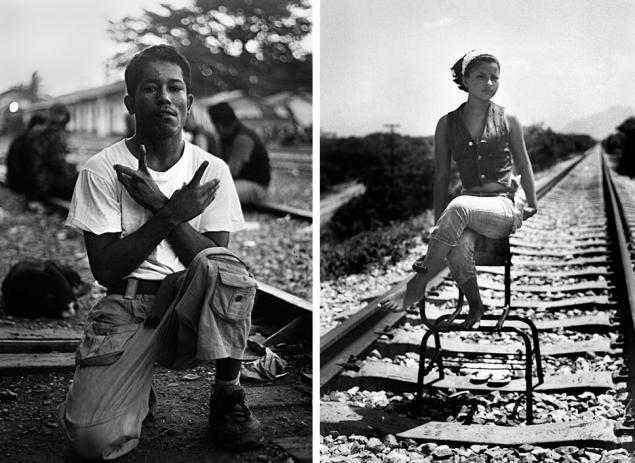
12. The safest place for the "rabbit" on the train - the last wagon. Here and settled Jacome. Trains in Mexico often go off the rails, and in the background the car most likely to survive. Shakes very much, so most of the "passengers" are trying to tie him to the car seat belts, ropes, or all that they find. Some even manage to sleep on the 13-hour stretch from Tapachula to Ixtepec.
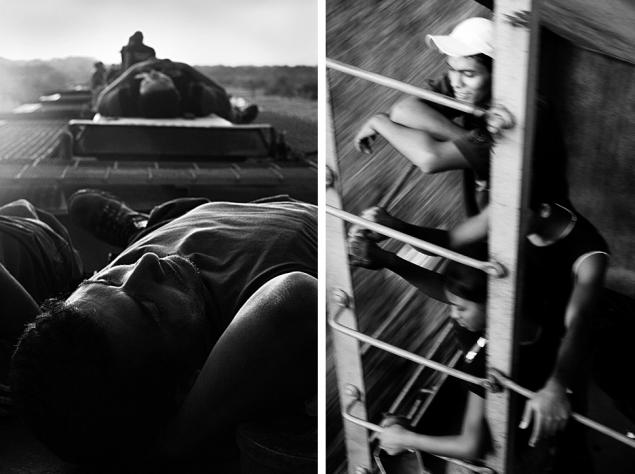
13. Typical routes migrants are well known - the Mexican authorities, local residents, the bandits. Operativos - mobile troops of the Mexican Army, stationed not far from the route of the train, sometimes arrange nighttime ambush and stopped trains. Many migrants, not wanting to be deported back, in such cases the jump from the train and catch them with military dogs. But even worse than the meeting with kidnepperami. They prey on migrants in small towns where the train stops. The majority of those wishing to move to the US is a "sponsor" in the United States and Central America, which helps to fund risky. (According Jacome, all the way to the United States can cost about 8000 dollars). The journalist spoke with several victims of abductions. Catching a man kidneppery get his phone number patron to call and demand money. Buybacks, however, are usually small, around 2,000 pesos (~ $ 150), but as these gangs caught a lot of people, that one good day they can "earn" a few thousand dollars.
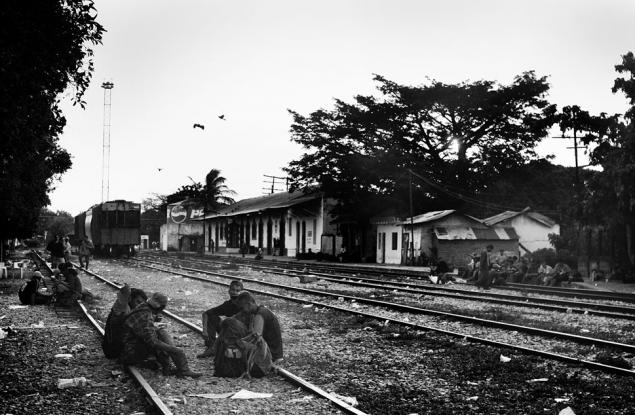
14. But the road continues, and life too. In the morning you need to shave. Migrants often travel in groups or fellow countrymen, so it's easier.
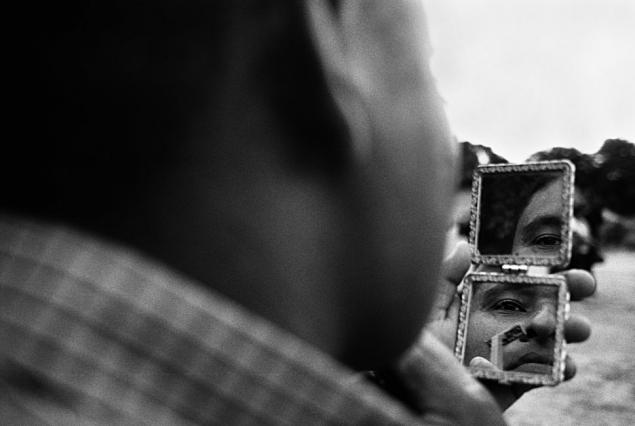
Padre Alejandro Solalinde 15. (left) holds a shelter in Ciudad Ixtepec. When Jacome first met him in 2005, the shelter was only one room and a patch of unfenced land fence. Now, thanks to donations, including from Germany, he built a bedroom for men and women. Originally from Mexico City, 65-year-old Solalinde has become a real defender of migrants than navlёk anger Zetas - known drug cartels, which is also involved in kidnapping. For the head priest of A reward.
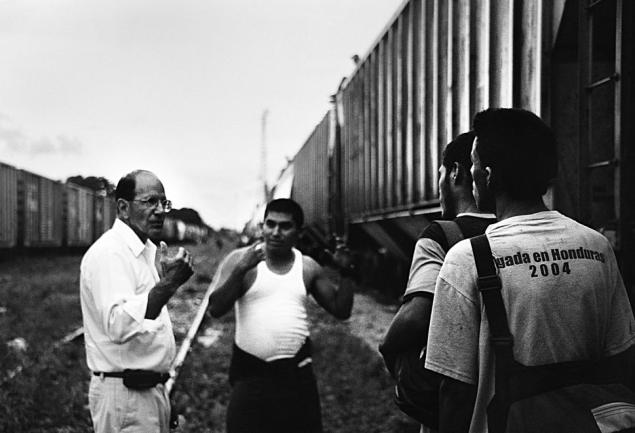
16. From Ixtepec path continues to the north. Migrants have already passed about 150 miles on a raft, on foot and on two trains. But it is virtually only the beginning of a long and hazardous journey. According to estimates of the Mexican government in the past year on this "highway" were about 64 million people - less than in previous years, and it is only a fraction of all those who seek to enter the United States from various parts of the world.

Source:
16 ph via live_report
1. Photographer Felipe Jacome Marchan spent 5 months, living in various shelters along the way, and the captured persons of Central American migrants wandering the dangerous path to a better life.

2. Most of the migrants on the way - young men. But there are also women and children, such as those crossing the river Suchiate River on the border of Guatemala with Mexico. According Mexican Service for Migration, about 8% of migrants have not reached the age of 18. Some groups make their way, some are alone.

3. On the Guatemalan side of the river, in the town of Ayutla, San Marcos, migrants can rent Kamara - a homemade raft of planks and old car cameras, it is enough to cross a narrow river.

4. On the Guatemalan side of the border - no police or border guards. Mexican Beach Mexican army guards, but for the price of a few pesos they usually agree to ignore the "guests". "Everyone turns as you can" - says Jacome, - rafts to transport not only people, but also weapons, drugs, contraband - anything. "

5. Once in Mexico, people go on foot. Previously, from the border to the nearest Mexican town went the train approached and migrants on the roofs of cars. But in 2005, the Mexican authorities have canceled the train and pulled down the path, so now strangers are forced to wade through the dead of woodland teeming with thieves and other dangerous rabble. The man in the picture more than a week made his way through the thicket to the nearest town with a / railway links. He ate unripe fruit, and earned food poisoning.

6. Along the route of mass repetition of migrants Catholic priests have organized several charity shelters, such as a shelter in the town of Tapachula. Where you can eat and spend a few nights until you arrive and do not take the place of the new wanderers. The map on the wall shows clearly a long way yet to. It will take him a few.

7. To travel needs money, and most of the migrants detained in the towns along the way to earn extra money. These people work in the photo on the packaging at the factory for the processing of papaya, collecting money for the next breakthrough. Some even manage to visit budget English language courses.

8. The majority of migrants Tapachula jump on a freight train, traveling through Arriaga in Ciudad Ixtepec. Sometimes, trains depart every couple of days, sometimes have to wait a week. The man in the picture is waiting. "It was terribly hot," - says Jacome.

9. None of the tramps knows when will be the right freight train at the station, so they are a handful of ways around waiting. When the freight train finally arrives, it begins doomsday. People crowded precipitated effluent composition. When the train picks up speed, some "hare" not withstand the pressure of air, and can tighten the wheels. Thus deprived of the limbs so many people that for them there is even a special shelter in Ixtepec.

10. For the opportunity to travel as machinists require a migrant charge.

11. Left: This son of illegal immigrants in Los Angeles was in the famous street gang Barrio 18. He was deported to Honduras for a crime and violating immigration laws, but it is already on the way back to the States. The fact that migrants are many bandits posing in an even more precarious position other "peaceful" migrants. They are often subjected to looting and violence on the part of not only the local villains, but these "fellow travelers." Often, peace workers, seeing that the train sits a group of thugs, get off the train and wait for a few days following composition and safer travel. Right: This 13-year-old girl wades through Mexico without their parents and relatives. Her mother, now living in California, threw it, but she still hopes to find her. For the safety of the girl joined the group of male migrants, and for that she does not pay protection money. According to estimates Amnesty International, 60% of women in this way are subjected to sexual exploitation.

12. The safest place for the "rabbit" on the train - the last wagon. Here and settled Jacome. Trains in Mexico often go off the rails, and in the background the car most likely to survive. Shakes very much, so most of the "passengers" are trying to tie him to the car seat belts, ropes, or all that they find. Some even manage to sleep on the 13-hour stretch from Tapachula to Ixtepec.

13. Typical routes migrants are well known - the Mexican authorities, local residents, the bandits. Operativos - mobile troops of the Mexican Army, stationed not far from the route of the train, sometimes arrange nighttime ambush and stopped trains. Many migrants, not wanting to be deported back, in such cases the jump from the train and catch them with military dogs. But even worse than the meeting with kidnepperami. They prey on migrants in small towns where the train stops. The majority of those wishing to move to the US is a "sponsor" in the United States and Central America, which helps to fund risky. (According Jacome, all the way to the United States can cost about 8000 dollars). The journalist spoke with several victims of abductions. Catching a man kidneppery get his phone number patron to call and demand money. Buybacks, however, are usually small, around 2,000 pesos (~ $ 150), but as these gangs caught a lot of people, that one good day they can "earn" a few thousand dollars.

14. But the road continues, and life too. In the morning you need to shave. Migrants often travel in groups or fellow countrymen, so it's easier.

Padre Alejandro Solalinde 15. (left) holds a shelter in Ciudad Ixtepec. When Jacome first met him in 2005, the shelter was only one room and a patch of unfenced land fence. Now, thanks to donations, including from Germany, he built a bedroom for men and women. Originally from Mexico City, 65-year-old Solalinde has become a real defender of migrants than navlёk anger Zetas - known drug cartels, which is also involved in kidnapping. For the head priest of A reward.

16. From Ixtepec path continues to the north. Migrants have already passed about 150 miles on a raft, on foot and on two trains. But it is virtually only the beginning of a long and hazardous journey. According to estimates of the Mexican government in the past year on this "highway" were about 64 million people - less than in previous years, and it is only a fraction of all those who seek to enter the United States from various parts of the world.

Source:












